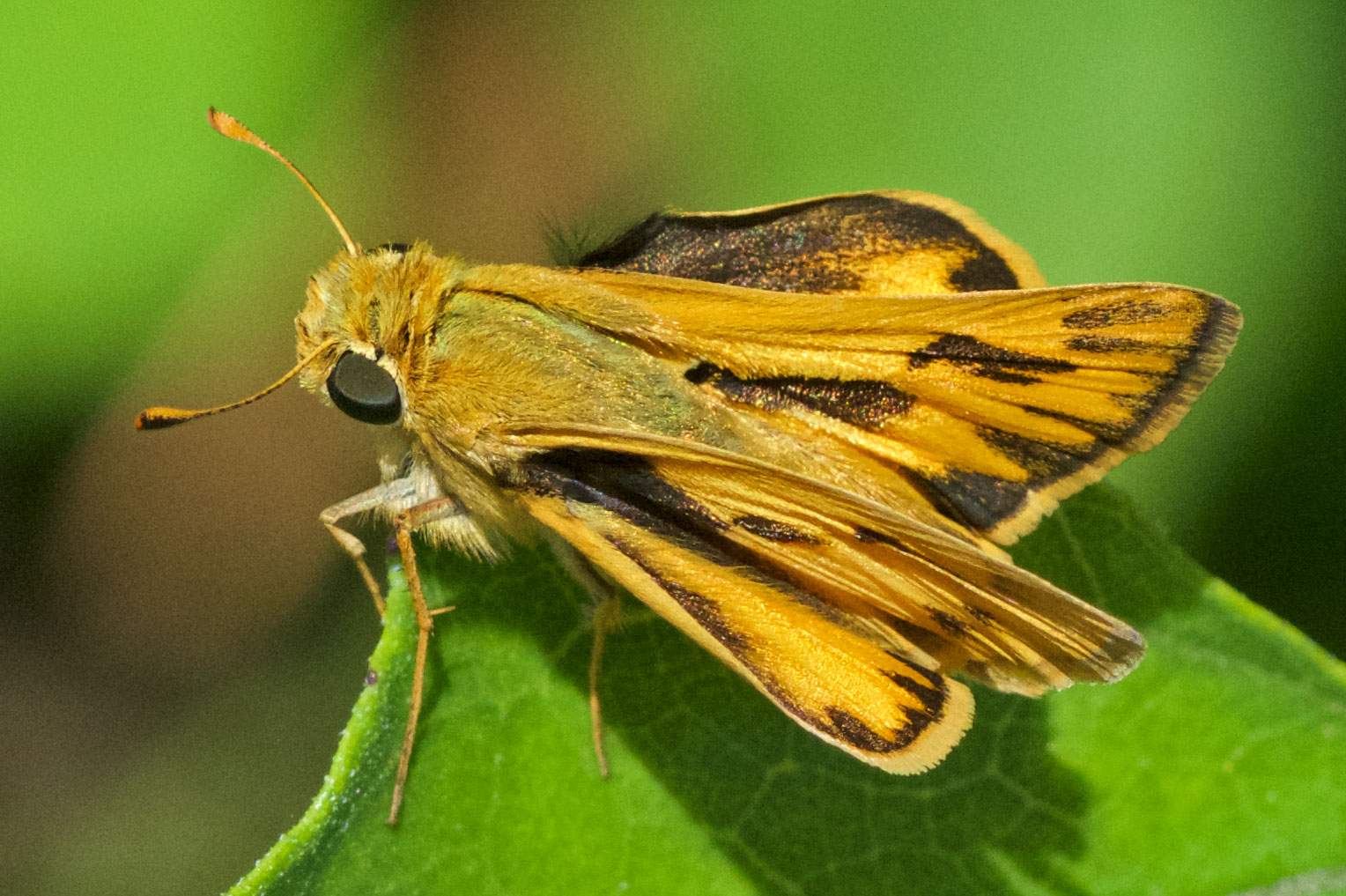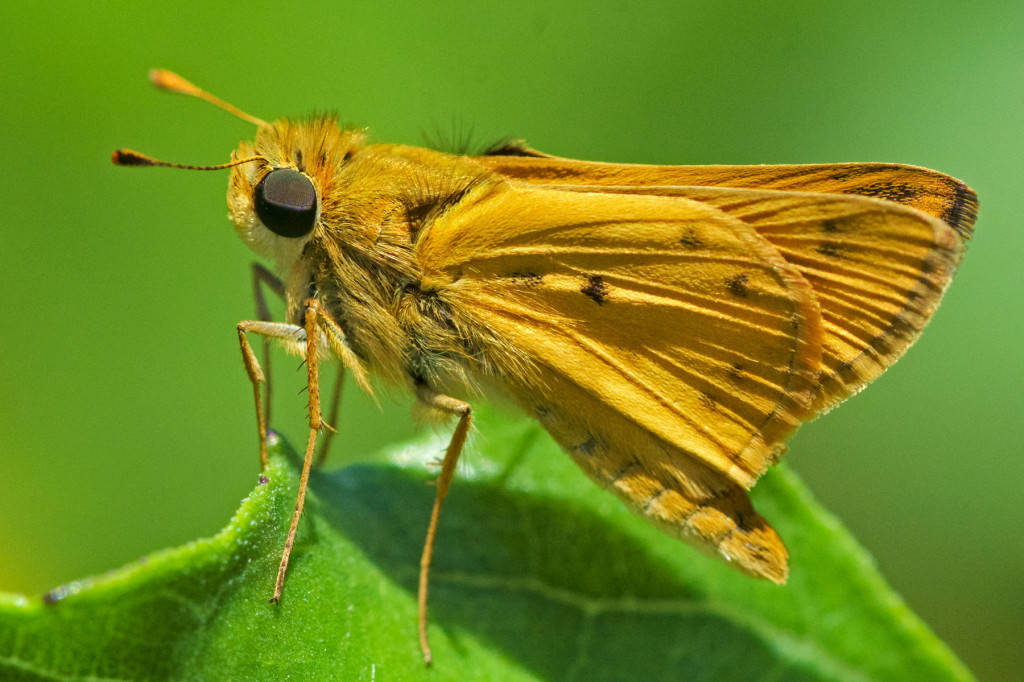The first question I ask myself when I see a small orange butterfly in the Skipper family is “What reason does it give me to think this is anything other than a Fiery Skipper?” Most of the time, the answer is none.
The reason is that this butterfly is a well-adapted generalist that thrives on a very common plant beloved (rightly or wrongly) by homeowners across the country: grass.1 This makes it a very common butterfly, with a wide distribution: it occurs from coast to coast in the southern part of the country (one of the first documented times I saw one was on a visit to the Page Museum, aka the La Brea tar pits in Los Angeles), and from the midwest to the east coast it occurs relatively far north as well, even reaching the Great Lakes.
Skippers are a large group of smallish butterflies with large bodies relative to their wing size (when perched, the tail end of the abdomen usually sticks out past the wings, whereas most other butterflies have wings, rather than body, tailmost). They often perch with their hindwings held low and their forewings held at a forty-five degree angle, reminding me of the tails of a jet fighter. (This perching posture differentiates most grass skippers from another group of skippers called the “spreadwing” skippers like Horace’s Duskywing, which perch with their wings, well, “spread.”)
There are three small orange skippers in my area that I need to consider whenever I see one: Fiery (by far the most common and widespread, spotted), Whirlabout (less common, also spotted), and Sachem (more common north of us, white spots instead of black).
Among these three, the Fiery and the Whirlabout are the most confusing, as they have very similar dark spots on their orange wings. The best ID mark I know is easier to spot in photographs than in the field, at least for me: on Fiery, the trailing edge of both the forewing AND the hindwing are scalloped, while on Whirlabout, ONLY the forewing is scalloped; the hindwing has a “smooth” border.
Despite their close visual resemblance, though, Fiery and Whirlabout skippers are not very closely related. The Fiery is the only member of its genus in North America; all of its close cousins are in South America (15 to 20 species in total). Whirlabout, on the other hand, is one of many “polite” skippers, so called not because they say please and thank you but because they appear “polished” or “refined” (from the latin politus) compared to most grass skippers.
Hylephila phileus translates to “woods-loving,” which is about as far from an accurate description as it’s possible to get in describing this urban (or urbane) lawnlover; it seems to delight in sunny open spaces rather than close dark forests.
Here are a couple of recent pictures of this lovely little butterfly:


References
Cech, R. and G. Tudor. 2005. Butterflies of the East Coast: an observing guide. Princeton, NJ: Princeton University Press.
Glassberg, J. 2012. A Swift guide to butterflies of North America. Sunstreak.
Related Images:
- While I appreciate the virtues of a tidy plot of grass, I don’t own the flocks of sheep needed to maintain the close-cropped greenery in a natural way, and I choose not to pay the monetary or social costs of the hordes of noise- and noxious-fume-polluting lawnmowers and leafblowers of the lawn services in my neighborhood. Perhaps I’m making a virtue of necessity, but I much prefer a field of wildflowers and shrubs to a putting green.

Many thanks for your comparison, as I was trying to identify my picture of a Fiery skipper (has edges similar to your picture on both front and back wings). Mine was photographed in my Lantana bush in Tavares FL, Nov 3, 2017. I had to look twice, as I thought it was a bee. It was captured by my cell phone and was pleased when the picture was clear and bright. No photo shop for me! I am considering sending it in for documentation.